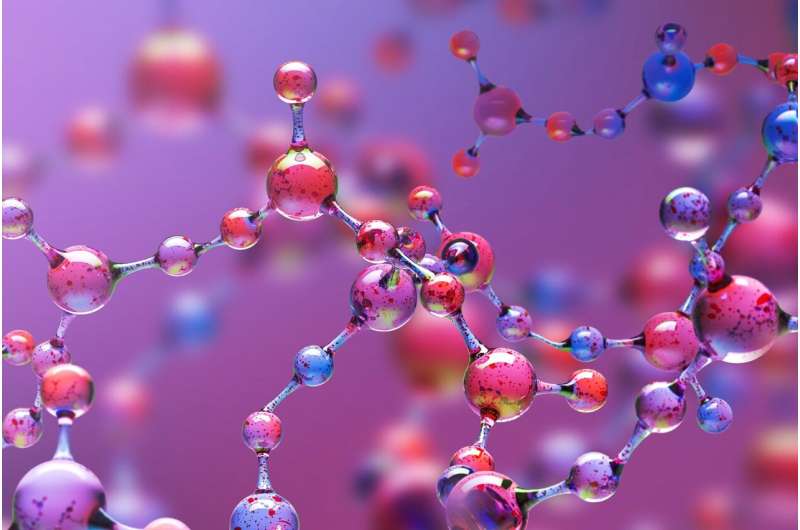This article has been reviewed according to Science X's editorial process and policies. Editors have highlighted the following attributes while ensuring the content's credibility:
fact-checked
peer-reviewed publication
trusted source
proofread
Scientists unveil synergistic method for non-canonical amino acid synthesis

New chemistry, new enzymology. With a new method that merges the best of two worlds—the unique and complementary activities of enzymes and small-molecule photochemistry—researchers at UC Santa Barbara have opened the door to new catalytic reactions. Their synergistic method allows for new products and can streamline existing processes, in particular, the synthesis of non-canonical amino acids, which are important for therapeutic purposes.
"This method solves what in my opinion is one of the most important problems in our field: how to develop new catalytic reactions in a general sense that are new to both biology and chemistry," said chemistry Professor Yang Yang, an author of a paper that appears in the journal Science. "On top of that, the process is stereoselective, meaning it can select for a preferred "shape" of the resulting amino acid."
The synergistic photobiocatalytic method consists of two co-occurring catalytic reactions. The photochemical reaction generates a short-lived intermediate molecule that works with the reactive intermediate of the enzymatic process, resulting in the amino acid.
The biocatalysis side starts with an enzyme to activate an abundant natural amino acid substrate and form an enzymatic intermediate. Meanwhile, on the synthetic side, a small molecule photocatalyst is made to absorb visible light in order to use the energy to activate another substrate. This reaction creates a short-lived radical species—a transient, highly reactive molecule that is the Yang Lab's tool of choice.
The thing about radicals (also known as "free radicals") is that not only do they tend to be short-lived, they're also hard to corral.
"The general consensus has been that if you form a radical in the solution or outside the protein pocket, there would be so many things that could happen to it before it could do something productive, like undergo side reactions, or be destroyed," Yang said.
But the lab's ace in the hole is the intermediate molecule generated by the enzymatic reaction, which can capture the freewheeling radical.
"So now the most important and interesting step is that once we form this transient and short-lived free radical species, it can travel to the enzyme's active site and react with the enzymatically formed, activated covalent intermediate molecule," Yang said. We've essentially engineered a system where the radical can efficiently react with the enzymatically formed intermediate and do stereoselective chemistry."
It's this efficiency that the Yang Lab is after in its bid to create a platform for stereoselective non-canonical amino acid synthesis ("noncanonical" simply means that these protein building blocks are not found in the genes of organisms). For one thing, the process is selective for different 'shapes,' or arrangements of atoms relative to each other within the resulting molecules—an important factor in the world of stereochemistry (also known as 3D chemistry). Secondly, the conventional method of synthesizing non-canonical amino acids is a complicated multi-step process.
"Our process shortcuts non-canonical amino acid synthesis by three to five steps. For amino acids with multiple stereogenic centers, there are essentially no chemical means to prepare these compounds with stereocontrol." Yang said. For makers of peptide therapies, this could be a game-changer. Yang has received inquiries from the pharmaceutical and biotech industries about potentially applying these technologies for amino acid synthesis.
And it doesn't stop there. This method could open new doors in both bio- and synthetic catalysis, allowing researchers to work with tricky radicals, access formerly unreachable compounds and molecules, and discover previously unknown reactions.
More information: Lei Cheng et al, Stereoselective amino acid synthesis by synergistic photoredox-pyridoxal radical biocatalysis, Science (2023). DOI: 10.1126/science.adg2420
Journal information: Science
Provided by University of California - Santa Barbara





















